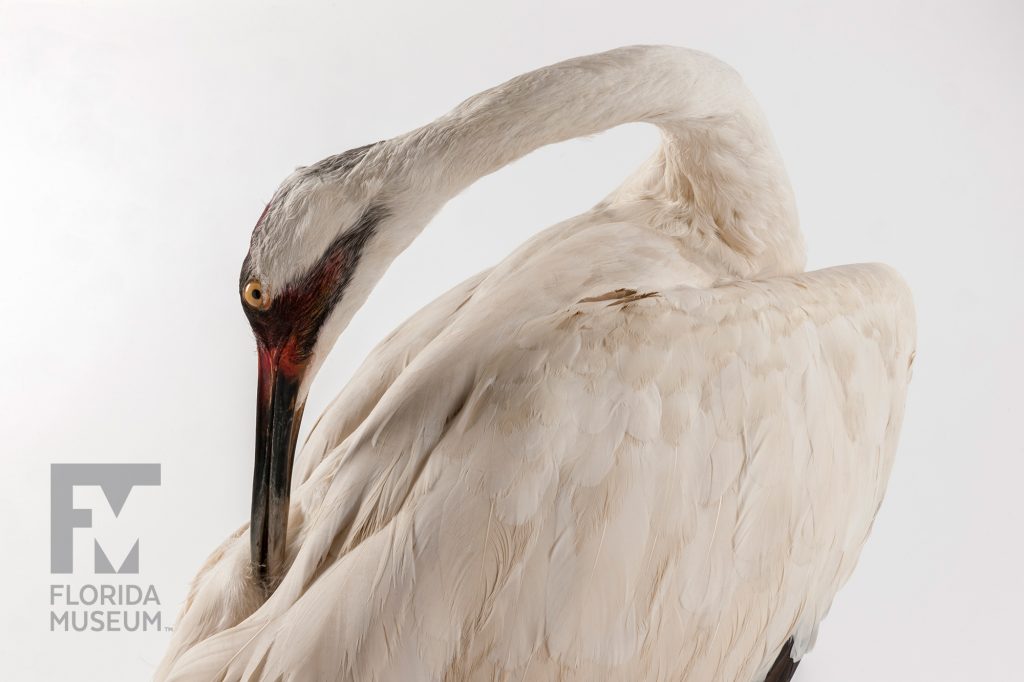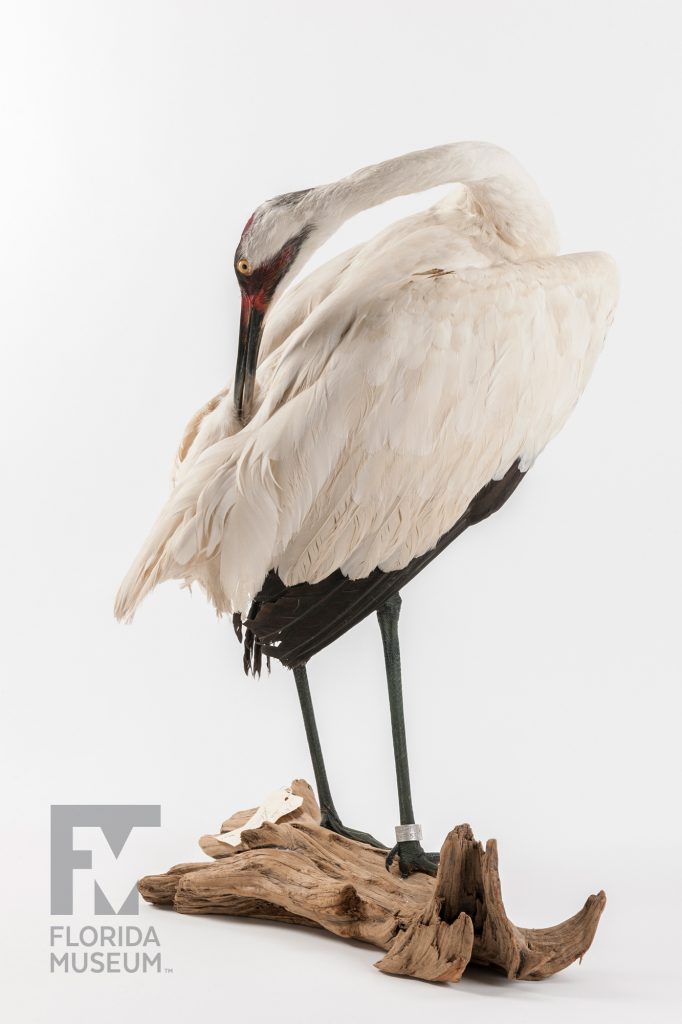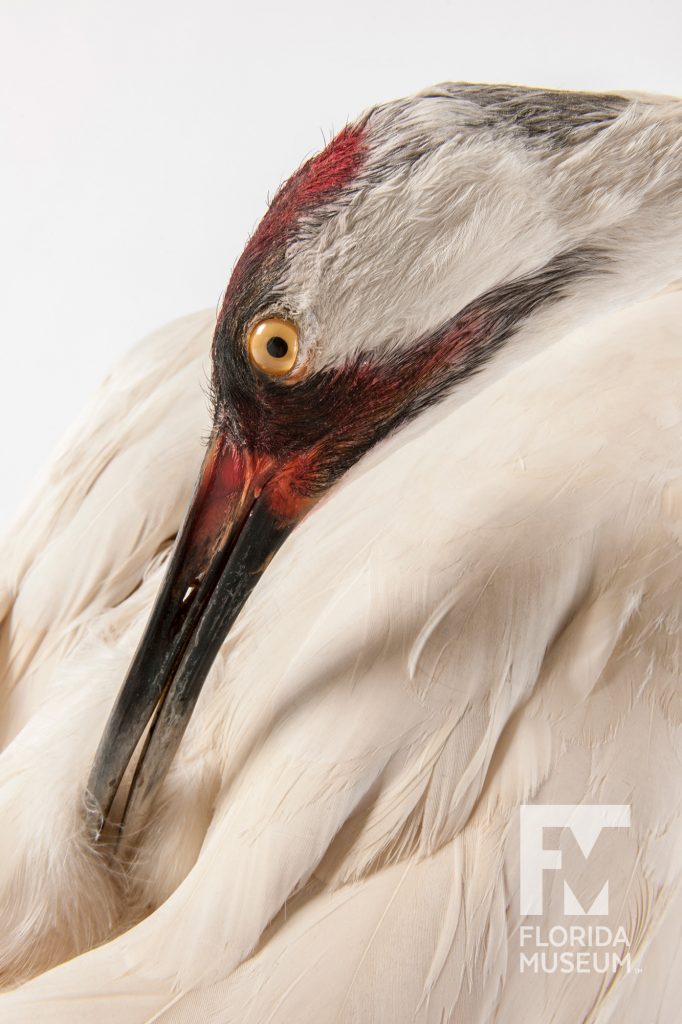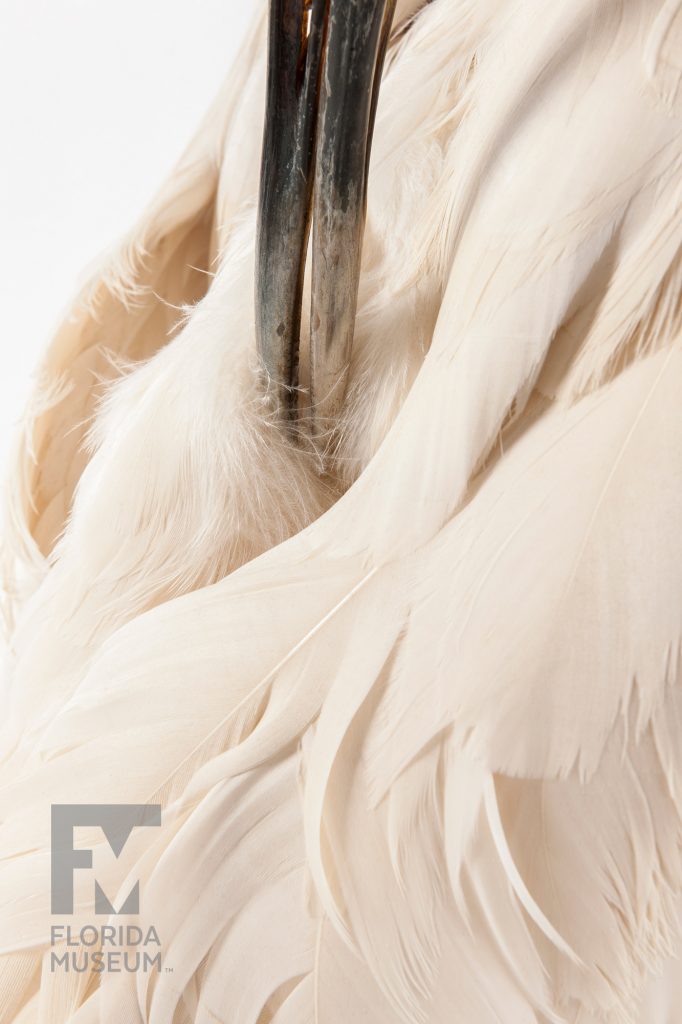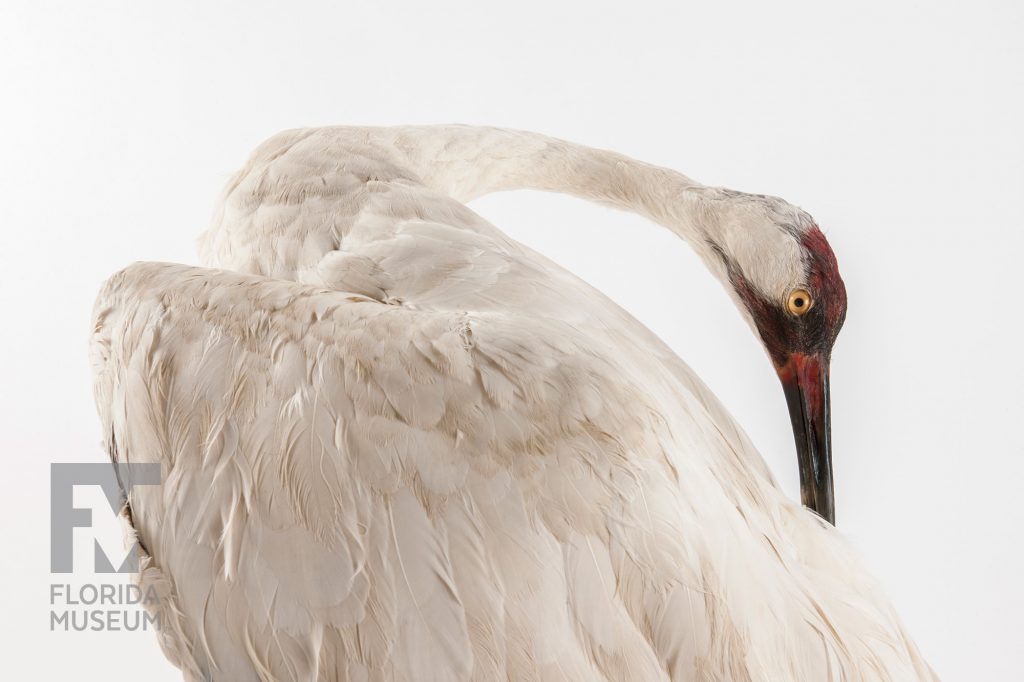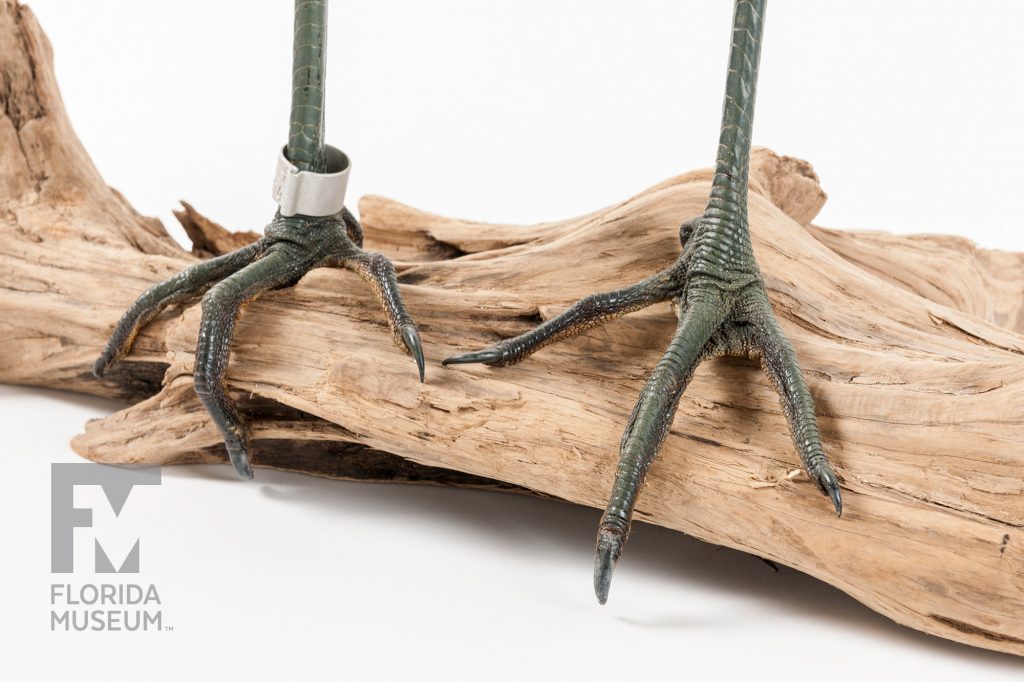The tallest bird in North America, the Whooping Crane symbolizes the need to protect endangered species. Extensive hunting brought the species to near extinction – by 1941 only 21 remained. Due to intensive management efforts, the wild population now tops 400 birds and breeding success has increased.
Summary
Whooping Crane (Grus americana)
From Duval Co., Florida, 2000
Collection
Story
The Whooping Crane is the largest of North America’s two species of crane. In Florida here we have the much more common Sandhill Crane which we can see pretty much statewide; it’s very common on Paynes Prairie – some of them breed – a lot more winter. The Whooping Crane has a tiny population compared to the Sandhill Crane – in fact it’s an endangered species. It reached a low point in the ‘40s where there was only something like 20 individuals left and they all nested up in Wood Buffalo National Park in northern Canada and they wintered along the coast of Texas.
Now starting in the ‘70s and ‘80s, people developed a program to try to expand the populations of Whooping Cranes, not just the core population that wintered in Texas, but also get other populations going. That program has been a moderate success; I would say the jury is still out. We still don’t have really the genetic diversity that you’d like to have, but Whooping Cranes are a lot more widespread today than they were when this program started in the 1970s.
So this past winter there was a Whooping Crane out on Paynes Prairie – and they’re a huge white bird – they’re really impressive and if you see it next to a Sandhill Crane – which is a big enough bird on its own – you really get to appreciate how big a Whooping Crane is.
We’re not trying to expand the population of Whooping Cranes beyond what might be the carrying capacity. When we look into the past into the archaeological and paleontological record, we find that Whooping Cranes were actually more common than Sandhill Cranes in Florida. So if the conservation program works in the long run we might restore things back to the way they used to be.
David Steadman
Curator, Ornithology*
Florida Museum of Natural History
Exhibit
On display Sept. 23, 2017-Jan. 7, 2018, Rare, Beautiful & Fascinating: 100 Years @FloridaMuseum celebrated the Museum’s rich history. Each Museum collection was asked to contribute its most interesting items and share the stories that make them special. Though the physical exhibit is closed, this companion website remains online, providing an opportunity to experience the Florida Museum’s most treasured specimens.
Exhibit Area: Introduction
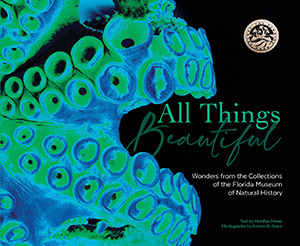 Want to see more? Explore more than 300 breathtaking color photos of plants, animals, fossils and cultural heritage materials from the Florida Museum of Natural History’s collections in the award-winning book All Things Beautiful available from the University Press of Florida.
Want to see more? Explore more than 300 breathtaking color photos of plants, animals, fossils and cultural heritage materials from the Florida Museum of Natural History’s collections in the award-winning book All Things Beautiful available from the University Press of Florida.
*This title was accurate at the time the exhibit was on display in 2017. Please visit the collection website to verify current staff and student information.
